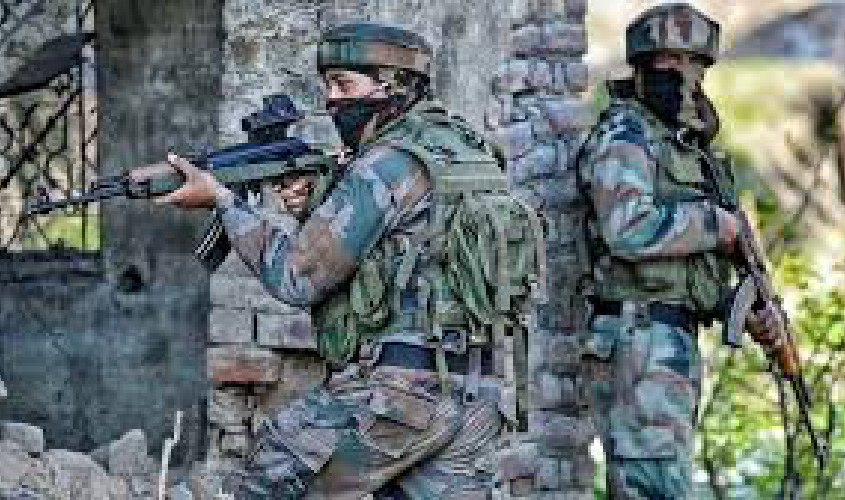C-60 commandos killed 42 Maoists in Gadchiroli and Chhattisgarh; eight extremists were gunned down in the Chhattisgarh-Telangana border.
Back to back killing of as many as 50 Maoists in separate encounters by the security forces in Gadchiroli district of Maharashtra and Bijapur district of Chhattisgarh for four days since 22 April, are the outcome of at least a year-long meticulous planning and preparations. The encounters were led by C-60 Commandos of Maharashtra and joined by Telangana’s Greyhounds and Chhattisgarh police. C-60 Commandos killed 42 Maoists in Gadchiroli and Chhattisgarh on Sunday and Monday, another eight extremists were gunned down in the Chhattisgarh-Telangana border on Friday.
This is the biggest blow to the Maoists in their four decades long movement in Dandakaranya forest zone and three armed squads have been completely wiped out and dozens of others were wounded. Never before have they suffered such huge losses in Maharashtra and Chhattisgarh where they built safe havens since early 1990s.
According to sources in the Greyhounds headquarters here, the firings have almost stopped, but search operations are still going on, on either side of Indravati river, a tributary to Godavari that separates Maharashtra, Chhattisgarh and Telangana. “We want to give credit to C-60 Commandos who led the ground operation in Gadchiroli,” said a Greyhounds officer, preferring anonymity.
In first encounter on Sunday and Monday, 42 Maoists were killed by the C-60 Commandos in Gadhchiroli which is a hub and shelter zone of Maoists for the last three decades. The specially trained commandos surrounded a tribal hamlet on the banks of Indravati and opened fire at the Maoists at 10 am on Sunday and that went on till 2 pm. Around 16 dead bodies were recovered on the spot.
A heavy rain that lashed the forests till 5 pm interrupted the search operations and when the combing continued the next morning, the cops found that another 15 bodies were found in Indravati and more bodies were recovered in the next two days, taking the toll to 42. Some of the bodies were eaten by crocodiles in the river and cops estimate that the deaths could still be higher.
The Gadchiroli encounter was followed up by another combing operation by the Chhattisgarh cops and a team of CRPF from the eastern side of Indravati and this led to killing of another eight Maoists who tried to escape into the Indravati Reserve Forest in Bijapur district of Chhattisgarh. With this, the death toll went up to 50 and the number may go up as some of the Maoists suffered serious bullet injuries.
The entire anti-Maoist operations in the week appear to be a spontaneous development, but according to sources, it is an outcome of a year-long preparation by the cops from the three states—Maharashtra, Chhattisgarh and Telangana—plus the CRPF personnel camping in the area. Encounter killings are not new to Chhattisgarh cops, but an operation of this scale is new to Maharashtra’s C 60 cops.
In fact, the C-60 Commandos were floated at the suggestion of then Andhra Pradesh anti-Naxalites special branch wing in the late 1980s, when kidnappings and landmine blasts were common in the border areas. The Maharashtra government floated a special commando force, C-60, in 1992. The C-60 Commandos were trained at Greyhounds in Hyderabad and anti-Maoist forces in Patna over a period of time.
Compared to Maharashtra cops, those of Chhattisgarh were poor in taking on Maoists in the border districts of Bijapur, Sukma and Bastar in the state. The CRPF personnel sent from the northern states, too, were good at fire power, but poor in taking on Maoists who are strong in guerilla methods of ambush.
This is a reason why a large number of CRPF, Chhattisgarh and Maharashtra cops were killed by the Maoists who resorted to landmine blasts and ambushing the patrol parties. Since 2014, the average killing of security forces at the hands of Maoists was around 90 every year. In 2017, it came down to 80, but still the number was high.
At a review meeting of the Ministry of Home Affairs (MHA) in Raipur last year with the cops of four affected states—Maharashtra, Chhattisgarh, Telangana, Andhra Pradesh and Orissa—it was found that the Maoists were fleeing into either Maharashtra or Orissa whenever there was a combing operation in Chhattisgarh. Sironcha block of Gadchiroli district of Maharashtra is a safe haven for them.
The terrain of this small forest zone is such that the movement of Maoists was hard to be tracked as it was full of major rivers—Indravati that separates Maharashtra and Chhattisgarh and Mahendratanaya that separates Chhattisgarh and Orissa and Godavari that passes through Maharashtra, Telangana and Andhra and Vamsadhara River that separates Andhra and Orissa.
After a series of Maoist attacks in Sukma district in the last three years, the Greyhounds forces imparted training to C-60 commandos in strengthening informers system in all villages along the borders. The latest encounter was facilitated by a tip off by an informer that three squads of Maoists—Sironcha, Ahiri and Parimela—were holding a meeting at a village in Sironcha on Saturday and Sunday. This information was quickly passed on to C-60 Commandos and Greyhounds who are manning the border areas of Telangana.

